Introduced last September, Nvidia’s Maxwell-based GeForce GTX 970 and GTX 980 delivered twice the performance per watt of their Kepler equivalents on top of bringing support for Microsoft’s upcoming DirectX 12 API as well as other new features such as Nvidia Voxel Global Illumination (VXGI), Multi-Frame sampled AA (MFAA), and Dynamic Super Resolution (DSR).
Despite being the series flagship, the GTX 980 is arguably the less interesting product. While it offers 23% more cores for a ~20% performance boost, the GTX 980 costs 70% more than the GTX 970. Along with providing a better value, the GTX 970 also outcompetes the Radeon R9 290X by offering better power consumption.
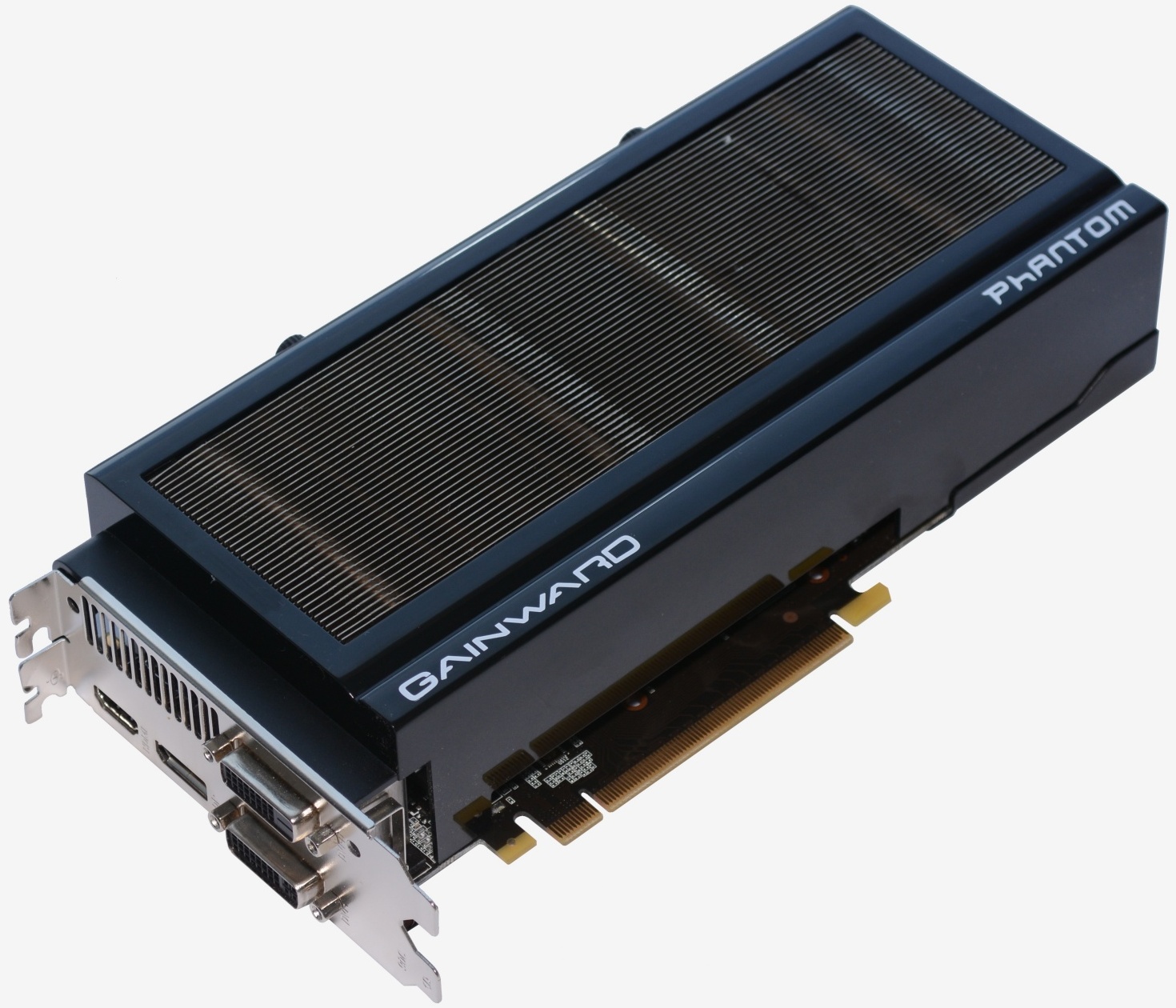
Those factors have made the GTX 970 an obvious pick for many, but at $US330 it’s still somewhat expensive when most gamers spend $US200 or less on a GPU.
Nvidia knows this and usually offers a cost-effective way to enjoy high-end games with ‘sweet spot GPUs’ such as the GTX 460, 560, 660 and 760 — the latter two being the most-used GeForce models on Steam.
Today’s release, the GeForce GTX 960 will take over this so-called sweet spot and should appeal to gamers who are preparing for the impending wave of DirectX 12 titles on a budget. The straight value of cards in this category usually makes them a prime candidate for SLI setups and we’ve also published a separate review covering the performance of dual-GTX 960s.
Gainward GTX 960 Phantom
The Nvidia GM206 GPU used in the GTX 960 features all the key architectural innovations introduced in the GTX 980. Looking at the core we find 2.94 billion transistors or about 43% less than the GTX 980. There is exactly half as many CUDA cores, taking the number down to 1024.
Additionally there are half as many TAUs and ROPs with 64/32.
The base clock of 1127MHz matches the GTX 980 (1126MHz) while the maximum boost clock is slightly lower at 1228MHz. The same GDDR5 7GHz memory has been used, though the memory bus width has been reduced to 128-bit resulting in a bandwidth of 112GB/s, half that of the GTX 980.
Gainward has overclocked its GTX 960 Phantom, boosting the base clock to 1279MHz which results in a boost clock of 1342MHz, while the GDDR5 memory frequency has also been boosted to 1800MHz for a data rate of 7.2GHz.
Gainward’s GTX 960 Phantom is armed with the third-generation Phantom cooler which boasts sturdier construction and better thermal performance while making less noise. It’s unlike any triple-slot cooler we’ve encountered before, featuring four 8mm heatpipes that extract heat from the base and distribute it evenly throughout the heatsink.
Gainward claims that its Phantom cooler allows the GTX 960 to run 16 degrees cooler than the reference board.
The most unusual part of the cooler design is its fans — their location, specifically. Fans are typically attached to the top side of the heatsink, but instead Gainward has embedded two quiet 80mm brushless PWM fans inside the heatsink. The fans are also removable, featuring a tool-less design. Similar to the way hot-swappable hard drive bays work, the fans slide out once a single thumb screw has been removed. No cables, no fuss.
The heatsink measures 210mm long (the PCB itself is just 170mm long), 65mm wide and just 15mm tall. It has a black fan shroud that forces the 80mm fans to draw air in through fins above them and push it over the card below them at the same time.
Apart from allowing the design of compact a PCB, another advantage to the GTX 960’s low 120w TDP rating is that it requires just a single PCIe 6-pin power connector. Gainward hasn’t upgraded its Phantom card with an 8-pin or a second 6-pin connector, as apparently the GTX 960 can achieve phenomenal overclocking results without any voltage increases — something we will look into later.
Compared to the GTX 970 and GTX 980 cards we have seen, the I/O connectivity of the GTX 960 Phantom is pretty basic with just one standard DisplayPort output, a single HDMI 2.0 output and two Dual-Link DVI outputs.
Test System Specs
Although we collected the frame time data we didn’t include it because it’s becoming less important for single-GPU reviews. Our results showed the GeForce GTX 960 being in line with the Radeon R9 285, which is about what we would expect, so there isn’t much to see here.
Frame time data will still be included in our CrossFireX and SLI reviews.
For this review we have tested at 1920×1200 and 2560×1600. We are yet to include 4K results or higher because there isn’t a single-GPU solution available yet that can provide playable performance at this resolution.
All graphics cards have been tested with core and memory clock speeds set to the AMD and Nvidia specifications.
Test System Specs
- Intel Core i7-4770K (3.50GHz)
- x2 4GB Crucial DDR3-2400 (CAS 11-13-13-28)
- Asrock Z97 Extreme6 (Intel Z97)
- OCZ ZX Series (1250W)
- Samsung SSD 850 Pro 512GB (SATA 6Gb/s)
- Gigabyte Radeon HD 290X (4096MB)
- Gigabyte Radeon HD 290 (4096MB)
- HIS Radeon HD 280X (3072MB)
- Sapphire Radeon HD 285 (2048MB)
- HIS Radeon HD 280 (3072MB)
- HIS Radeon HD 265 (2048MB)
- HIS Radeon HD 7970 GHz (3072MB)
- Gigabyte GeForce GTX 980 (4096MB)
- Gigabyte GeForce GTX 970 (4096MB)
- Gainward GeForce GTX 960 (2048MB)
- Gigabyte GeForce GTX Titan (6144MB)
- Gigabyte GeForce GTX 780 Ti (3072MB)
- Gainward GeForce GTX 780 (3072MB)
- Gainward GeForce GTX 770 (2048MB)
- Gainward GeForce GTX 680 (2048MB)
- Microsoft Windows 8.1 Pro 64-bit
- Nvidia GeForce 347.25
- AMD Catalyst 14.12 Omega
Benchmarks: Crysis 3, BioShock
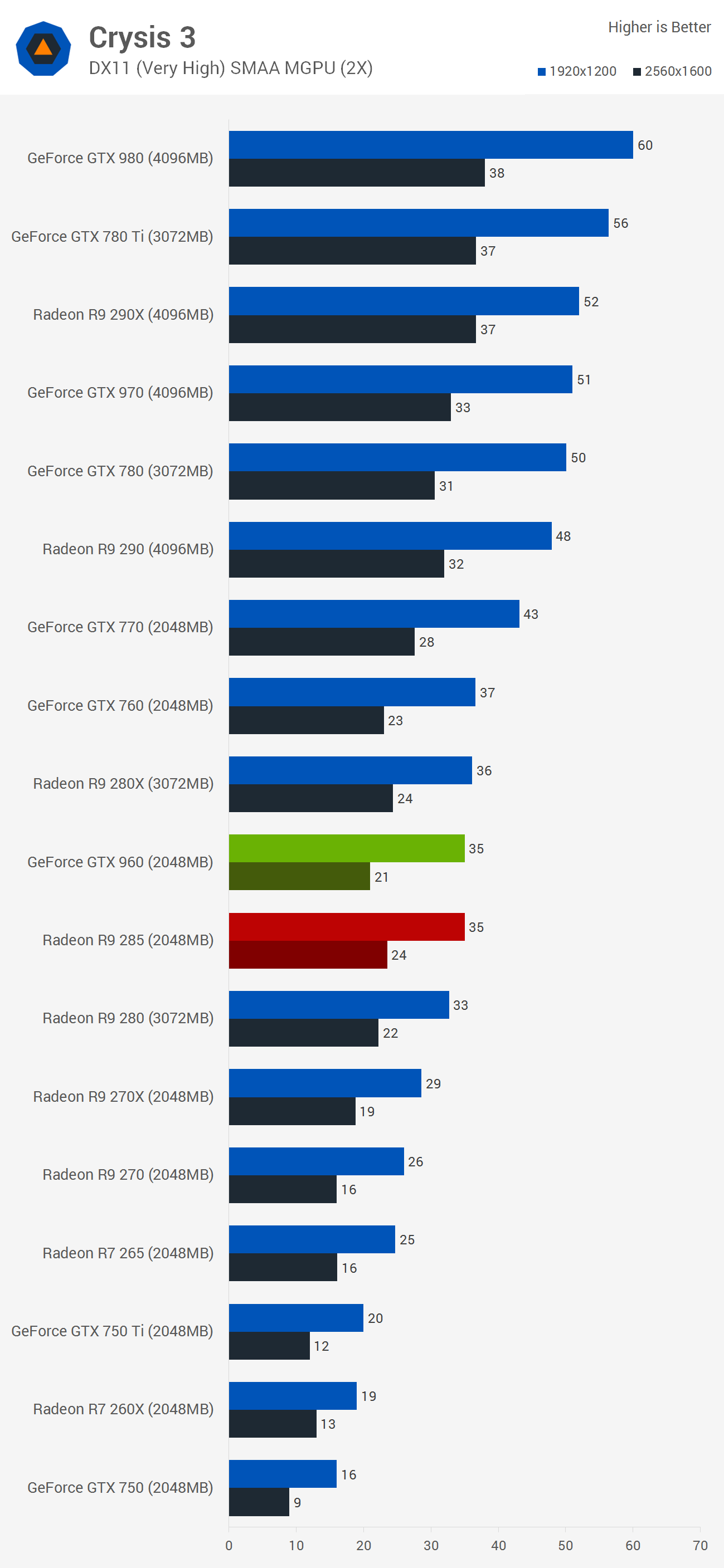
The GTX 960 matched the R9 285 at 1920×1200 though it was 13% slower at the higher 2560×1600 resolution. The GTX 960 was also 3% slower than the R9 280X, but 6% faster than the R9 280.
Disappointingly, the GTX 960 was 5% slower than the GTX 760 and 19% slower than the GTX 770. Compared to the GTX 970, the GTX 960 was 31% slower, which seems like a bit too much of a gap to us.
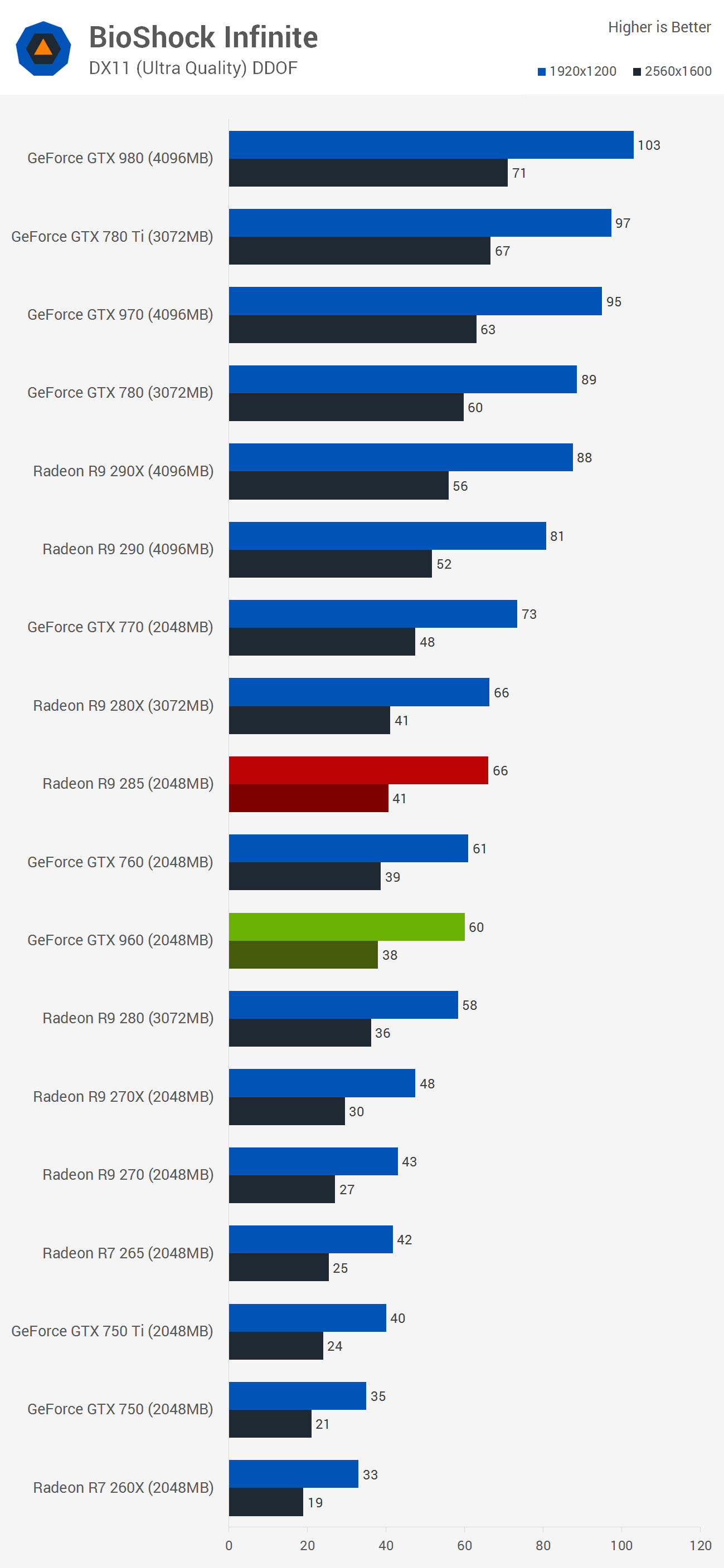
The GTX 960 struggled in BioShock Infinite. Despite managing to narrowly defeat the older GTX 760 by a mere 2% margin, it was 37% slower than the GTX 970. Worse still, the GTX 960 was 9% slower than the R9 285 and R9 280X, while it was just 3% faster than the R9 280.
Benchmarks: Metro Last Light, Tomb Raider
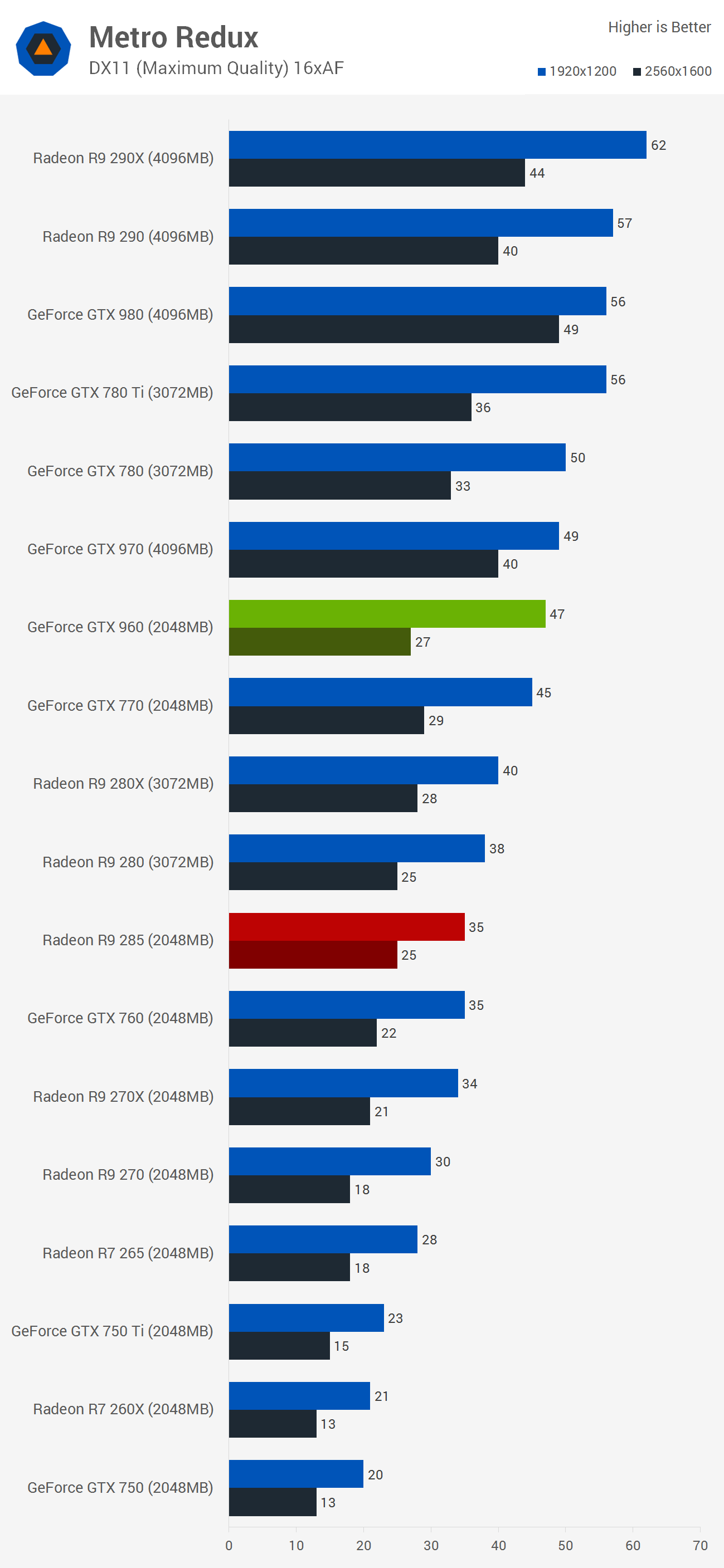
The Metro Redux results are very unusual as the GTX 960 was just 4% slower than the GTX 970 at 1920×1200, but 33% slower at 2560×1600. Moreover, it was 34% faster than the R9 285 at 1920×1200 but just 8% faster at 2560×1600.
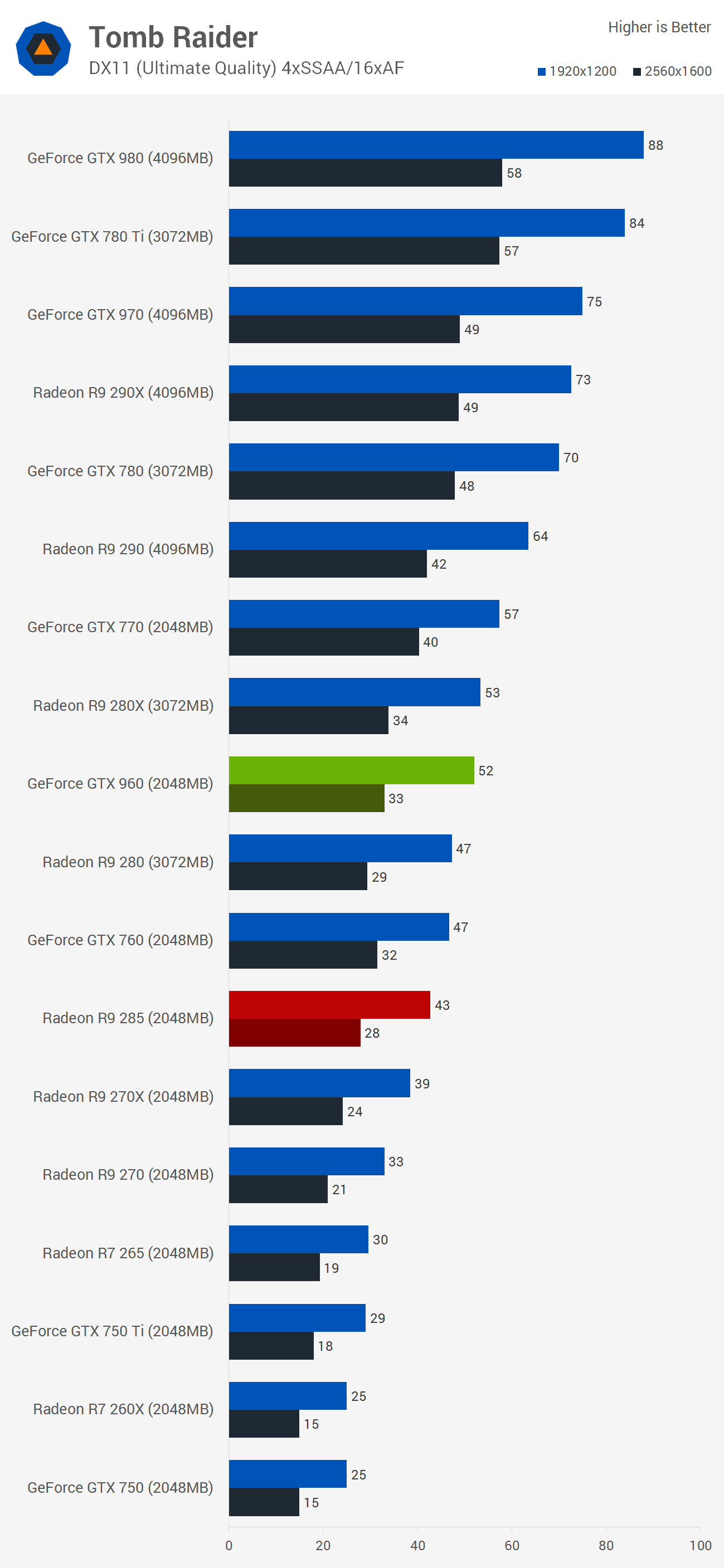
The GTX 960 averaged 52fps at 1920×1200 — 11% faster than the GTX 760 yet still 31% slower than the GTX 970. Compared to the R9 285, the GTX 960 was 21% faster, but 2% slower than the R9 280X.
Read More:
|
Republished with permission from:

Steven Walton is a writer at TechSpot. TechSpot is a computer technology publication serving PC enthusiasts, gamers and IT pros since 1998.
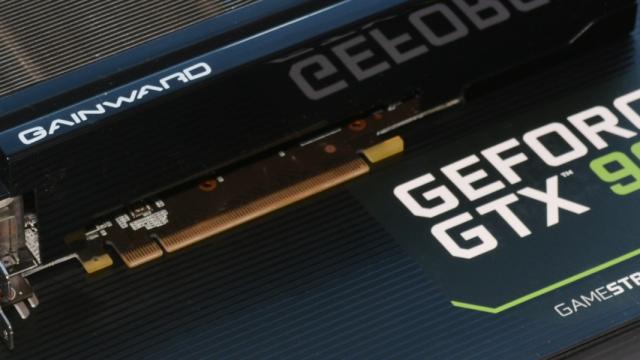

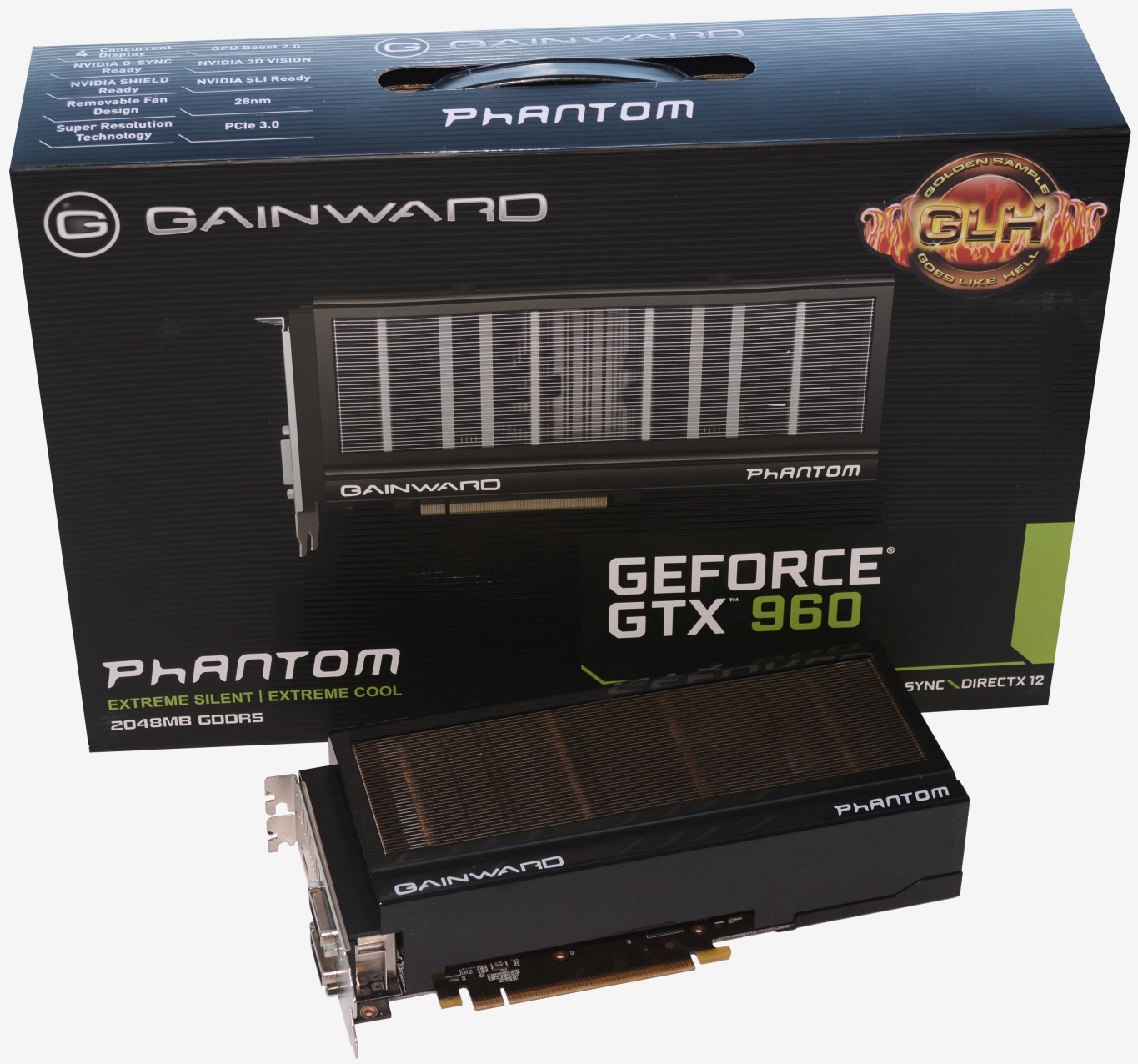
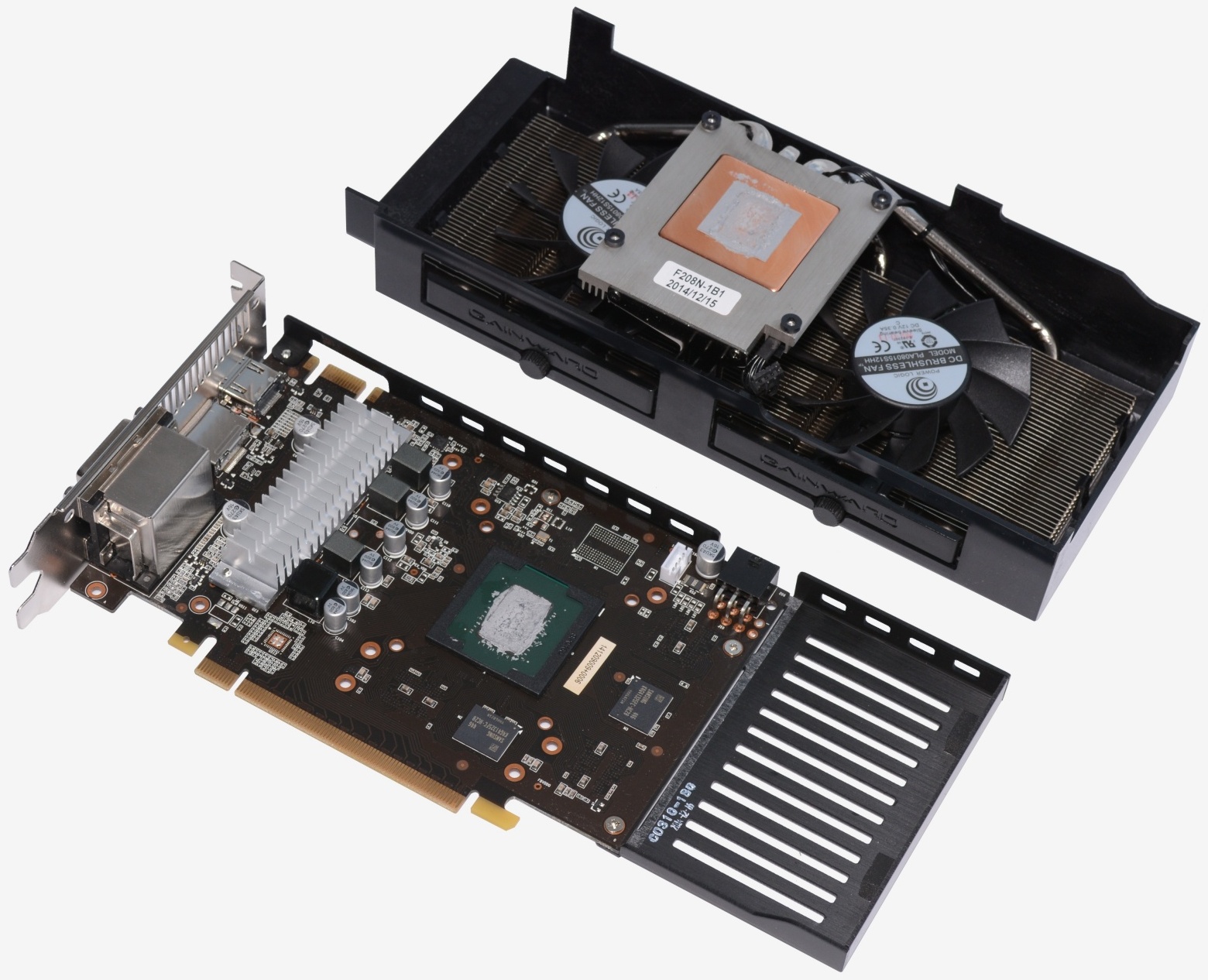
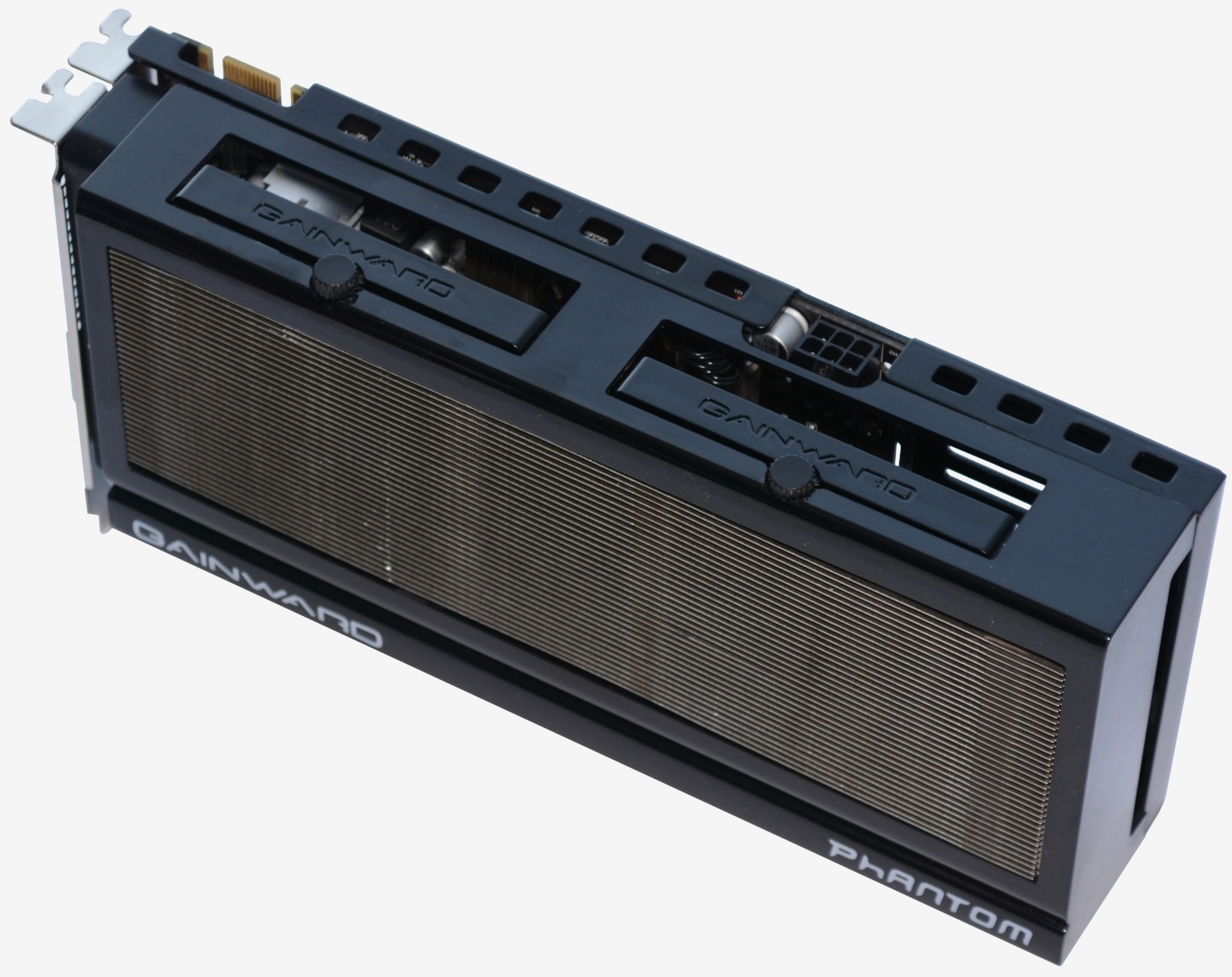
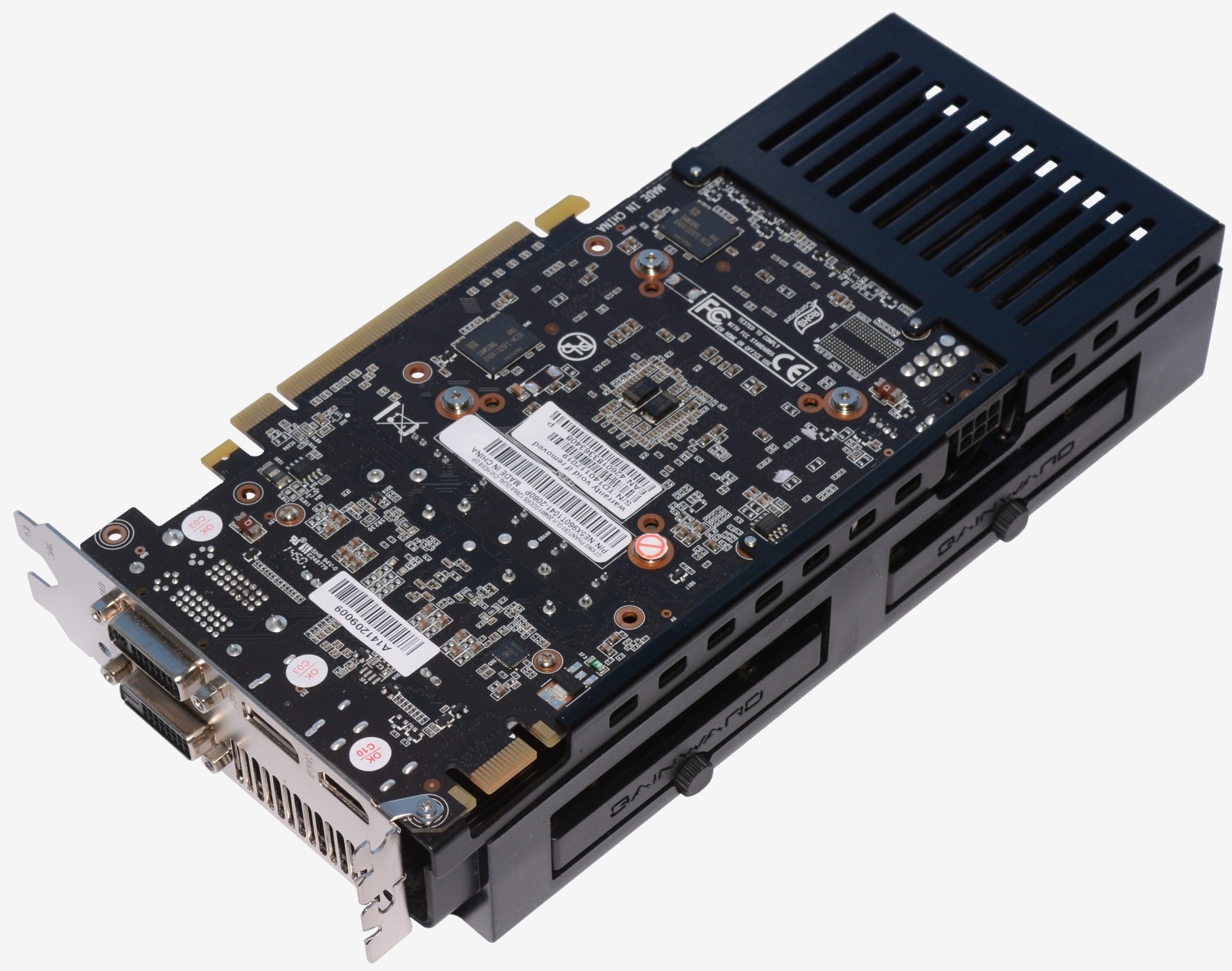
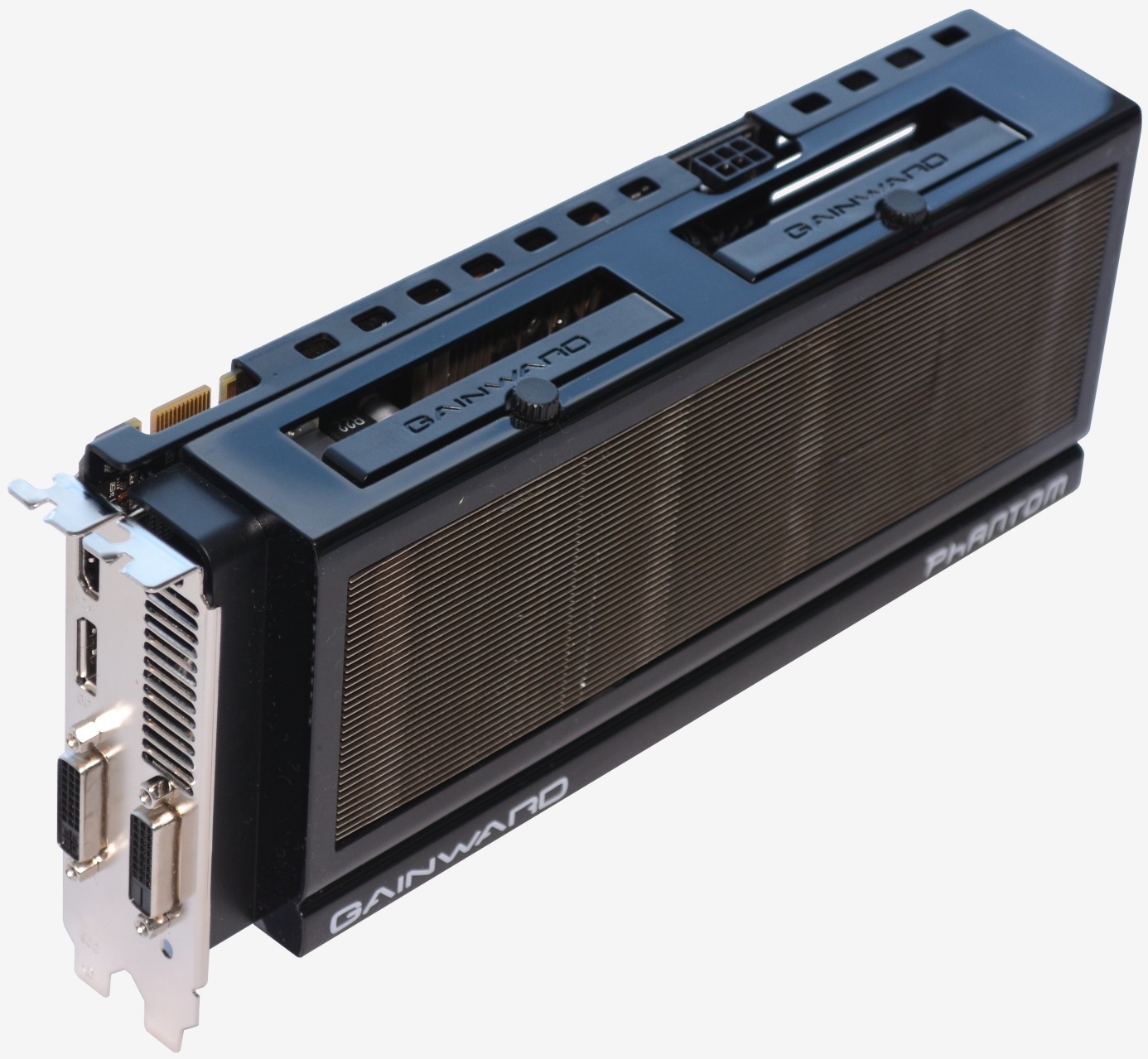
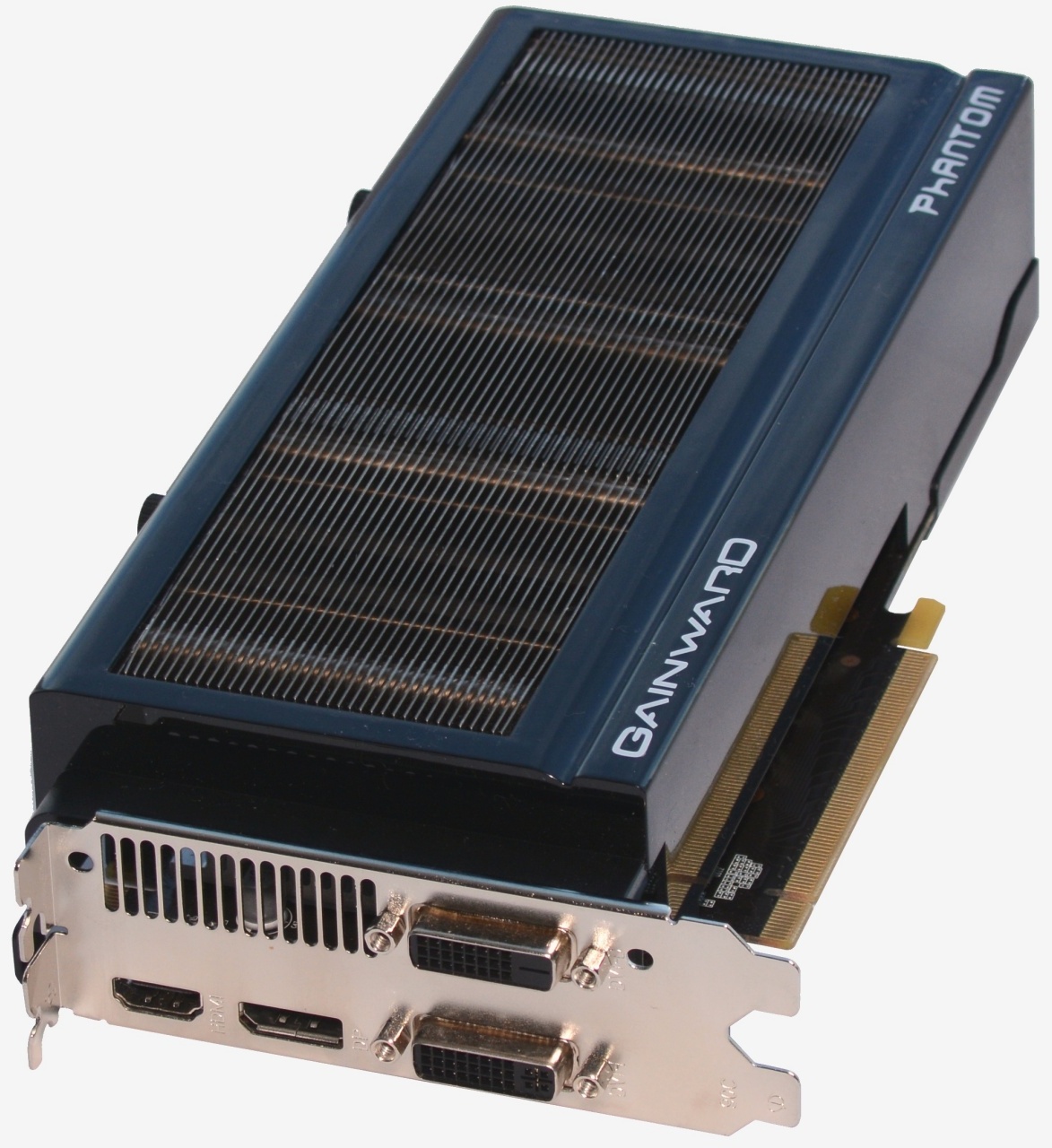
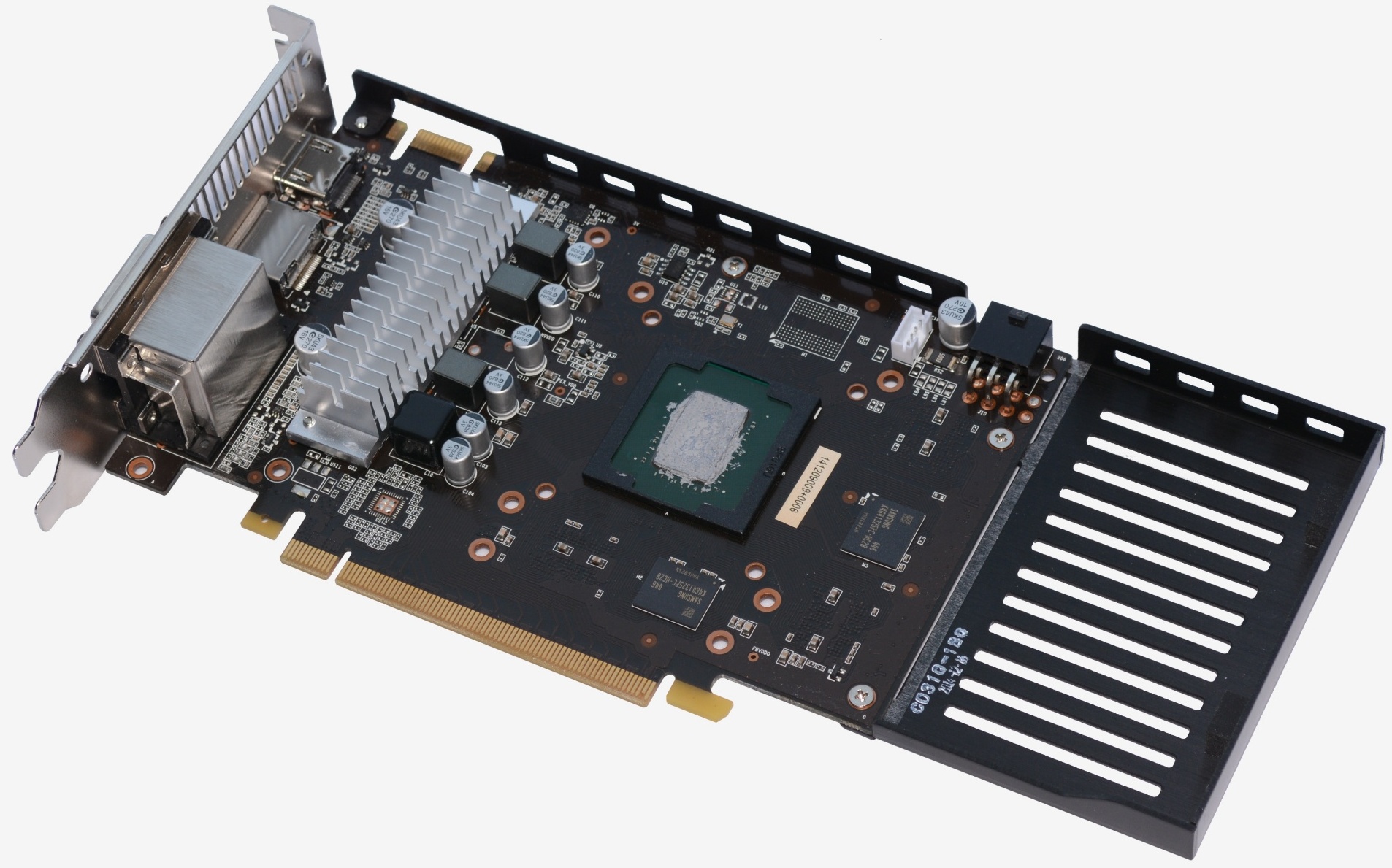
Comments
15 responses to “Geforce GTX 960 Review: Sweet Spot’ GPU Or Not?”
Gainward sure do make ugly coolers… I’m sure they’re fine for cases without windows, but for people who like to admire their parts…nope.
As for the 960 itself though, as Linus mentioned, Nvidia’s pricing is pretty annoying. They’re determining the price based on where it fits performance-wise between other cards, therefor they’re not moving forward giving consumers more for their money or even making something to compete with.
You can get more powerful AMD cards for less money. The only benefit of the 960 seems to be power consumption and therefor overclockability. Anyone who doesn’t overclock their graphics cards should give this a pass and go for AMD.
I usually wait till the TI versions comes out, they always feel like a better tuned card.
Every gamer I know with AMD cards has had a series of troubles with drivers and game support. Maybe it’s bad luck but personally I’m staying away from AMD. Never had an issue with my NVIDIA cards.
Unfortunately that is that case with my last two AMD cards. Consistant driver fails.
Both were pretty powerful cards as were all the mid tier ATi cards I had since the 9600 (I haven’t had an nVidia since the old MX4400 I had yonks ago).
Unfortunately both AMD cards I had last (HD 4890 and a HD 6950 ) had issues with games and in many cases I had to underclock the cards to get games to run stable. Games that ran fine without this though ran really well.
I thought I would give nVidia a go again and got a GTX 970 and no issues so far.
Had always been the case for me until recently with. Alien isolation. Had to roll back drivers to get it to work until a fix was done in the next driver update. According to steam forums a very common problem. But a work mate with a 290 has had no dramas with any game.
Well as Linus mentioned in his 960 SLi video you can get an R9 280 (I think?) for only a little bit more than the 960 and it packs more of a punch. Personally i’ve been burned too many times by AMD/ATi cards in the past to ever want to use them again. It moved me to Nvidia of which i’ve never had an issue, my 8800GTS eventually died due to old age and my GTX 560 is still going strong but thinking i’ll replace it with either a 960Ti or a 970 when I come around to bothering with a new system.
960s are starting at about $290 right now, whereas R9-280s start at $260, with R9-285s at around $310 and up (on par with many of the bigger name brand 960s). The cheapest R9-280 you can get your hands on is a Gigabyte model, available for $30 less than the cheapest 960, which comes with the excellent Windforce3 cooler (I have another card with the same cooler), which should allow ample headroom for overclocking.
My personal view is that if you haven’t owned an AMD GPU since before your 8800GTS, you’ve missed out on some great cards.
There are quite a few people who avoid AMD for those reasons but I doubt those are still issues on their modern cards, and if those issues still exist they would certainly be less common. I’ve not had an AMD card since I lean towards Team Green, but for budget PCs I’d definitely consider Team Red over Team Green.
Also be wary of the current VRAM problems on the 970 cards at the moment. Might want to hold off until current units are replaced with revised ones.
straya tax yet again?
also if your looking to get a 970
http://www.lazygamer.net/general-news/nvidias-gtx970-has-a-rather-serious-memory-allocation-bug/
They’re only 230/240 in Canada and PC Case Gear is listing them for as little as 290 here for a reference model. Which isn’t too bad, so eh.
Edit: also remember our dollar is now trading at 79c to the US, so can expect a price hike on stuff now, yay..
still, have to buy in Australia otherwise what ya gonna do if its RMAed post it back to overseas?
Wikipedia is now showing the 980ti however I’m taking that with a pinch of salt. Just scouring for info on what will power my screen…
980ti is definitely coming however Nvidia are sitting on it until AMD do something.
A triple slot cooler on a mid range card. Times have changed since I last needed to buy a card (which I’ll need too soon at some point).
Seems a bit silly since it’s so energy efficient, but maybe it’ll help overclocking.
Removable fans in an interesting feature.